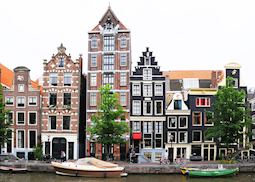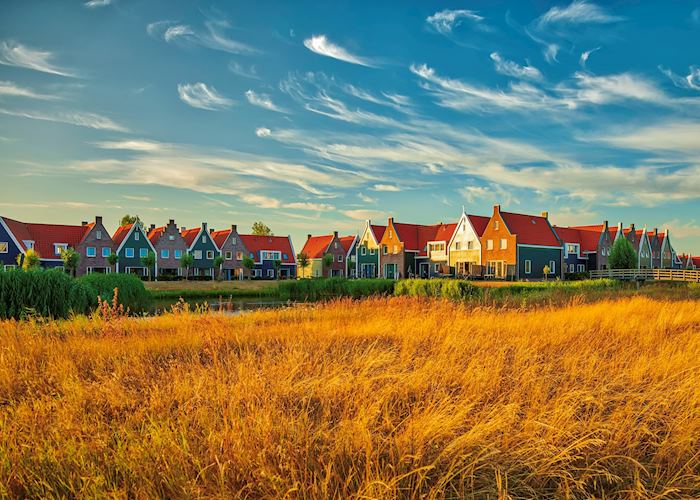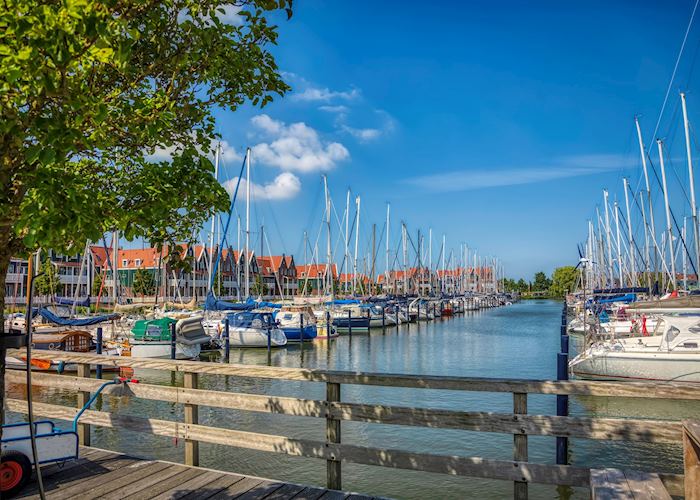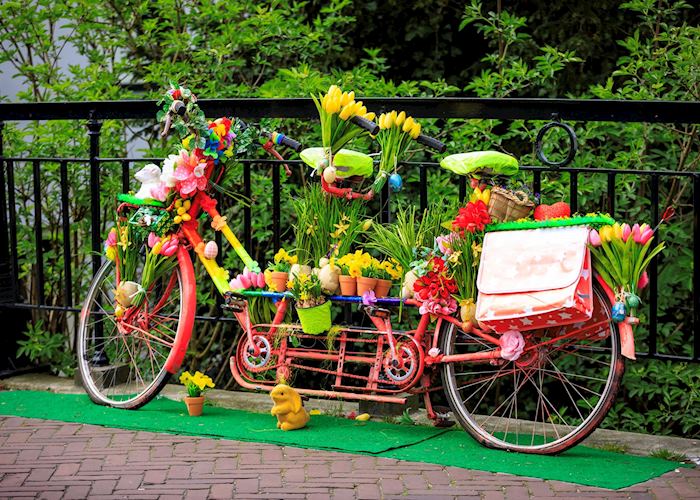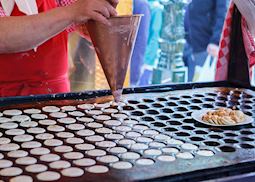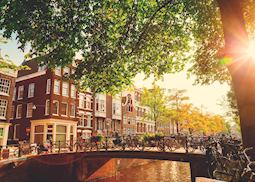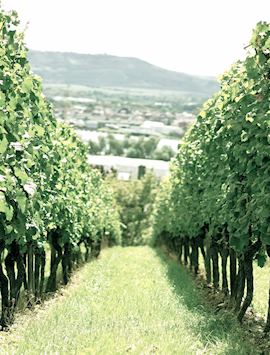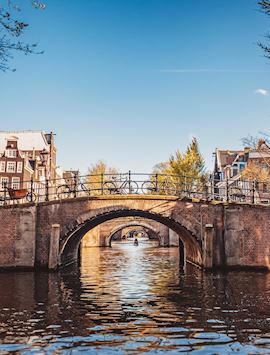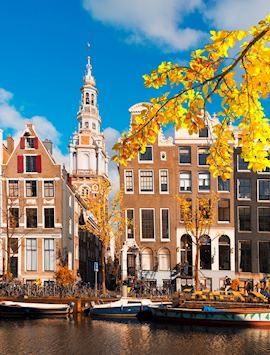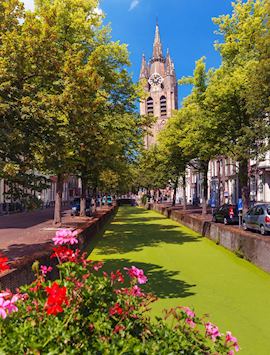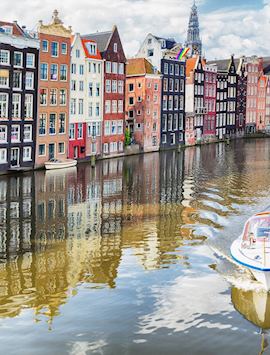Heading out into the Dutch countryside, this tour gives you the chance to get away from the most-visited areas of the country and spend a day exploring three of the Netherlands’ smaller towns with a driver and guide. Not only will you see plenty of the region’s 17th-century architecture, but your guide can give you a sense of rural life in the Netherlands by explaining each town’s history and cultural customs.
Edam is best known for its eponymous cheese, and you’ll hear about the importance of cheesemaking in the town's life, as well as examine the old-fashioned wooden lift-bridges that span its many canals. In Marken, you'll learn about the monks who built the town and why so many houses are on stilts. Finally, in the fishing town of Volendam, you can sample smoked eel and other fresh fish.
Your driver and guide will pick you up at your hotel in the morning to take you into the area known as Waterland, where all three towns are located. Not quite a wetland, this wide tract of flat green plains is threaded with canals, and was once part of a shallow inlet linked to the North Sea. In the 20th century, a massive dike was built, cutting the inlet off from the sea and reclaiming a province-worth of land.
On the shore of the now-freshwater Lake Markermeer is Edam, known mainly for its eponymous cheese, which has been wrapped in red or yellow wax and sent on trading ships for centuries. The old cheese market is one of the town’s highlights, with traditional-dress performances of deliveries by boat and human-drawn handbarrows. But Edam has other charms among its cobbled streets and quiet canals.
A clock tower, dating from 1561, marks the remains of a vanished medieval church. The nearby brick Saint Nicolas Church dates from the 15th century. Its vaulted ceiling is a wooden replica of a typical stone ceiling, to keep the weight down and prevent it from sinking in the low-lying land. The Edam Museum is a 400-year-old canal house, which includes a so-called floating cellar — a brick room designed to accommodate changes in water level.
You’ll then take a ferry across to Marken, an even smaller fishing village that was an island before the dike was built. Unlike Edam’s brick structures, Marken is known for its wooden houses, mostly painted green and gray, with bright-white sills and rooflines. The houses are built on small, artificial hills called werven, which protected them from flooding in centuries past.
At the tiny waterfront promenade, there’s a shop called Sijtje Boes Souvenirs, the first gift shop in the Netherlands founded by a woman. The store’s owner and namesake Sijtje Boes began by giving tours of her home and selling souvenirs from a basket, but it evolved into a shop stuffed with seaside collections and other indications of Marken’s old way of life.
The last stop of the day, and the largest town, is Volendam. Best known for its waterfront along the dike, Volendam also has its own hidden life. At the port, you can see old Dutch wooden ships, and enjoy fresh seafood like herring and smoked eel, making this a good stop for lunch — your guide can suggest a restaurant.
In the old part of town, you can walk a maze of small houses with narrow, brick-cobbled paths connecting them, known as Doolhof, or the labyrinth. The homes have brick lower floors, green-wood upper floors and steep red-tile roofs, but while they’re clustered together closely, the small district isn't too difficult to escape.
In the evening, your driver will return you to your hotel.
